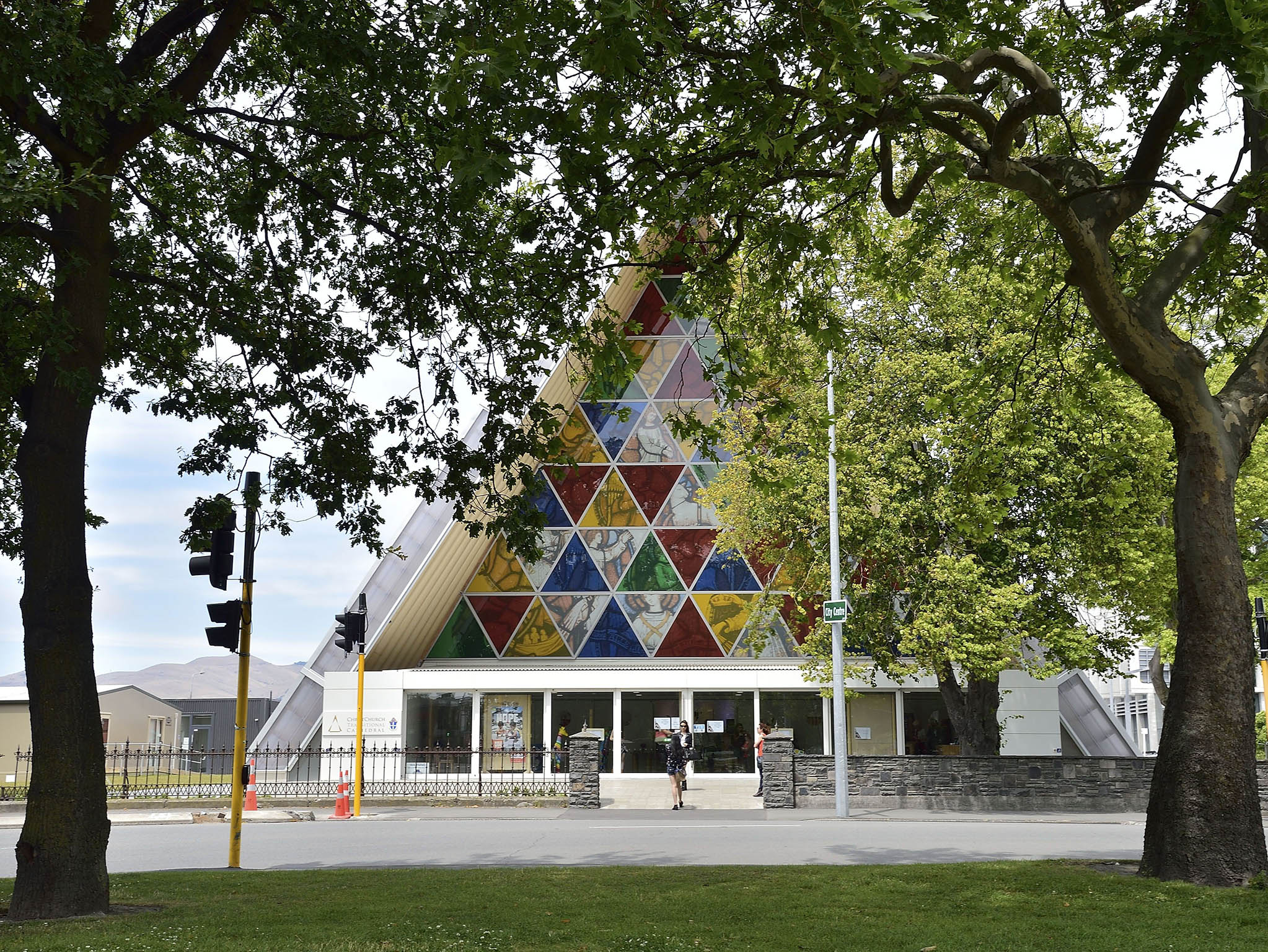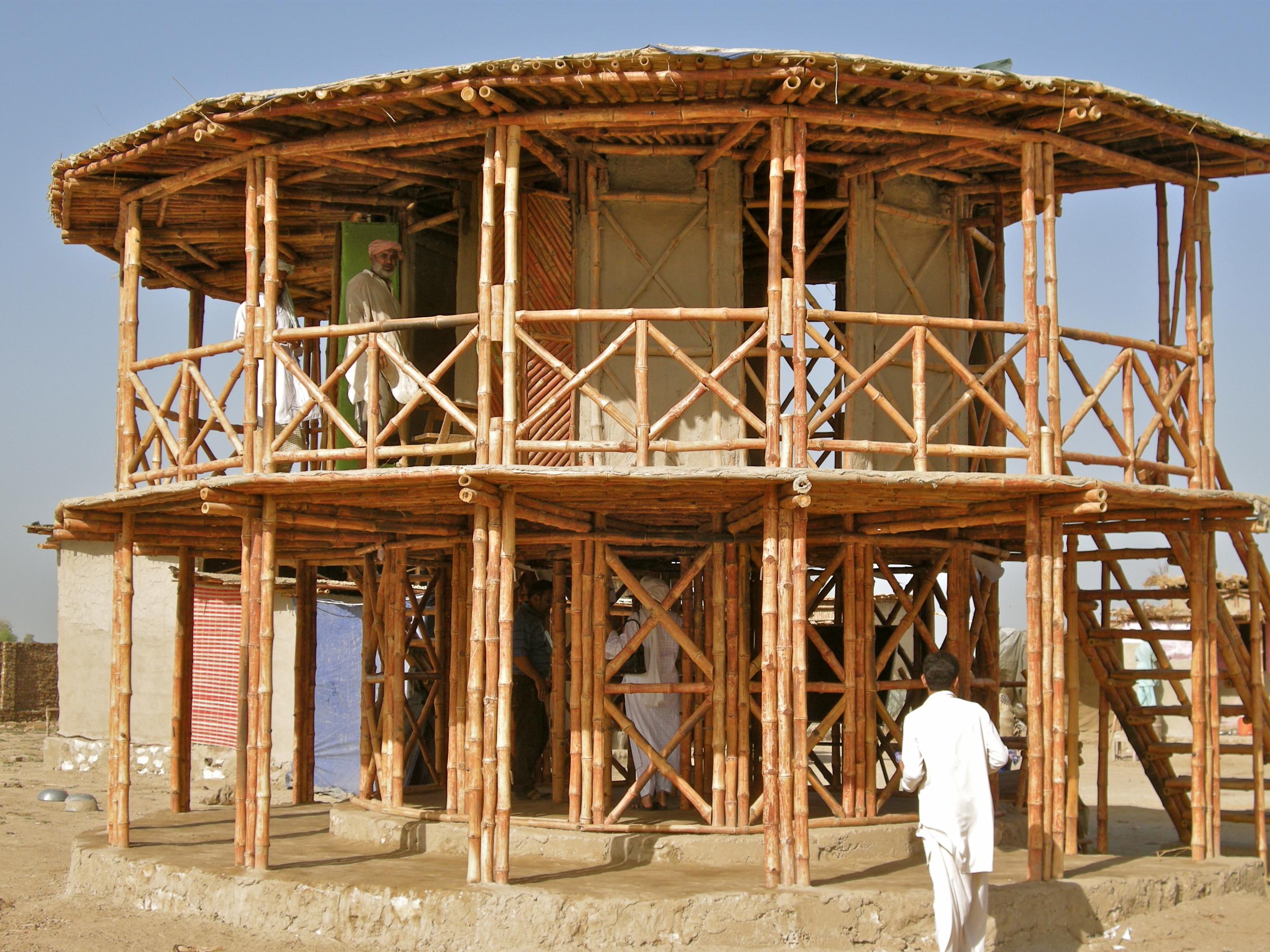New exhibition ‘Creation From Catastrophe’ looks at how architects are doing more to prepare us for disaster - but is it enough?
The show is especially prescient following the recent floods in Cumbria, which has raised questions about how to build in the region in the future

Your support helps us to tell the story
From reproductive rights to climate change to Big Tech, The Independent is on the ground when the story is developing. Whether it's investigating the financials of Elon Musk's pro-Trump PAC or producing our latest documentary, 'The A Word', which shines a light on the American women fighting for reproductive rights, we know how important it is to parse out the facts from the messaging.
At such a critical moment in US history, we need reporters on the ground. Your donation allows us to keep sending journalists to speak to both sides of the story.
The Independent is trusted by Americans across the entire political spectrum. And unlike many other quality news outlets, we choose not to lock Americans out of our reporting and analysis with paywalls. We believe quality journalism should be available to everyone, paid for by those who can afford it.
Your support makes all the difference.As Cumbria faced destructive floods at the end of last year, history seemed to be repeating. Disasters are ten-a-penny, some natural, many more due to man’s ham-fisted neglect of the planet or our inability to get by without recourse to violence.
The result is always the need for a new start, and how we respond and rebuild colours an uncertain future more than ever. Yet, for all the carnage and chaos that catastrophes bring, an odd truth is apparent: disasters do give us the chance to shape things differently.
In Cumbria, building repairs are already under way, although Carlisle City Council wants to demolish its flood-damaged home – the 1964 Civic Centre, one of the city’s best modern buildings. The council wants to replace it with a drab retail park – but shoppers might need a dinghy to sail their box-fresh trainers home because it will still be on a flood plain.
Meanwhile, the question remains: what can be done in the long-term to break the cycle? Houses on stilts? Stop building on land that floods and let nature take back what is rightfully its own?
With some prescience, architectural, responses to calamity are the subject of a new exhibition at the Royal Institution of British Architects later this month.
Creation From Catastrophe uses photographs, paintings, collages, drawings, maps and models to demonstrate how grand plans emerged from the ashes, from Christopher Wren’s brazen scheme to give London an ordered and precise layout after the Great Fire of 1666, with St Paul’s Cathedral at its heart, to the sprouting of America’s first vertical forest of skyscrapers in Chicago after the apocalyptic fire of 1871, or how modern-day Chile and Nepal have rebuilt after devastating earthquakes.
“Most of us are seduced by the idea of being given another chance; to start afresh. Many architects are inevitably drawn to the idea of the tabula rasa – the opportunity to realise a perfect, authored vision unhindered by incremental layers of history, social relations and previous architects’ ambitions,” says Creation From Catastrophe curator Jes Fernie.
Indeed, one of the great architectural movements of recent history emanated from the devastation of the Second World War; it lit the touchpaper of the Modernist project to build bold new housing estates and expressive city centres across Europe, even if the “blank slate” wasn’t always as “blank” as all that: one of the great myths surrounding Birmingham’s gorging itself at a post-war buffet of ring roads, shopping malls and skyscrapers was that the Luftwaffe had left nothing.

In fact, planners used the medium-scale bomb damage as an excuse to bulldoze great swathes of Brum and create a new city for the future. By contrast, neighbouring Coventry really was wiped off the map, and its rebuilding resulted in one of Britain’s most attractive Modernist towns.
Britain was also a destroyer: our bombers hit Cologne and Dresden without mercy. As with Nazi-destroyed Warsaw, the old towns of these historic cities were painstakingly reconstructed, while new districts were added. Meanwhile, in places like Plymouth, Rotterdam and Le Havre, architects took the opportunity to act radically – transforming street plans and erecting daring buildings.
“The combination of urgent need and ‘never-again’ ambitions meant saw the postwar era create some of the most forward looking architecture in history,” says architectural writer Douglas Murphy, whose new book Last Futures: Nature, Technology, and the End of Architecture explores the quirks of the Modernist project in the 1960s.
Later, Modernism was seen as the solution in the face of natural disasters. In Skopje, for example, a devastating earthquake in 1963 resulted in an almost wilfully eccentric masterplan for rebuilding the Macedonian capital by Japanese architect Kenzo Tange.

He tried to build the most futuristic city in the world – complete with walkways, platforms, capsule flats and towers – and almost managed it. In the end, only portions of his plan were acted upon but today Skopje still boasts numerous maverick buildings such as the avant garde Post Office and the chunky National Bank of Macedonia.
If architectural bravado used to be considered the best response to ruin, approaches have become more nuanced and more pragmatic in recent years. “Since the collapse of Modernism, it has moved to a more socially engaged approach that involves working closely with local people after a disaster; building on their skills and knowledge,” says Fernie, who sees a “distinct power shift” from the architect to the citizens.
A great recent example of this softer attitude is Shigeru Ban’s Cardboard Cathedral, which popped up in Christchurch, New Zealand, after the earthquake of 2011 that devastated the 19th century original.
“Cardboard instead of concrete” is the motto of Ban’s studio, which specifically works on disaster relief projects; quick to erect, the replacement cathedral is now one of the city’s most robust, quake-proof buildings. “The strength of the building has nothing to do with the strength of the material,” Ban has said. And while it is only a temporary solution, it has already become unique symbol.
In an increasingly imperilled world, it’s clear that architects must engage with disaster more than ever, but this aspect of their role is not given its due weight, says Dr Esther Charlesworth, an expert in the newly defined practice of “humanitarian architecture” or socially conscious design.
“How to design for a fragile and vulnerable planet should be our primary mission as architectural educators and practitioners. Where were the architects in the recent Paris climate talks? Where is the Pritzker Prize for humanitarian architecture?”
Some architects are beginning to set their sights far ahead to consider how disaster might affect the world in centuries to come. Take the firm NLE, who have designed a range of seaborne public buildings for Nigerian delta communities, such as the Makoko Floating School which bobs on a Lagos lagoon like a giant houseboat. This Waterworld aesthetic could become de rigeur if sea levels rise.
It’s a point not lost on Henk Ovink, the Dutch government’s special envoy for water affairs.
Living in a country that has battled the sea for centuries, Ovink knows how crucial it is that we think ahead: “Water crises are the number one risk in the world. Two billion people will be devastated by 2050, four billion by 2080 – if we continue with our current practices. Of all worldwide disasters 90 per cent is water-related.
Global urbanisation gives us growth, prosperity, emancipation and development opportunities – but climate change and sea-level rise put a lot of pressure on our cities, societies and citizens, on our economy and ecology. If we don’t act, the system will collapse.”
From Carlisle to Callantsoog in the Netherlands, from Cotonou in Africa to Chittagong in Asia, today’s architects are testing fold-out shelters and flatpack bridges that can respond quickly to flooding, and houses on stilts or floats that will rise above a deluge.
Above all, open discussion within local communities is key, as Fernie says, pointing to Chilean firm Elemental’s project to rebuild the city of Constitucion after a 2010 tsunami.
“It’s a great example of what can be achieved in a short space of time,” says Fernie. “Local people were brought in to a discussion about whether a section of their city should be expropriated and turned into a forest to ease the effects of future floods. It was a long-term, bold decision that entailed rehousing and uprooting one group of residents for the greater good.”
But the question lingers: do we do enough? Disasters lead us down new architectural avenues; the tragedy is that these are only clear after the event.
As Douglas Murphy says: “Like the proverbial frog in a pot, urban change may have been urgently necessary for a long time, but often the cataclysmic disaster has to occur before the political ambition to affect it properly aligns ... considering the developing crises of the 21st century, this is a sobering thought.”
‘Creation From Catastrophe’ opens 27 Jan at Riba, Portland Place, London (architecture.com/WhatsOn/Jan2016/CreationfromCatastrophe.aspx)
Join our commenting forum
Join thought-provoking conversations, follow other Independent readers and see their replies
Comments